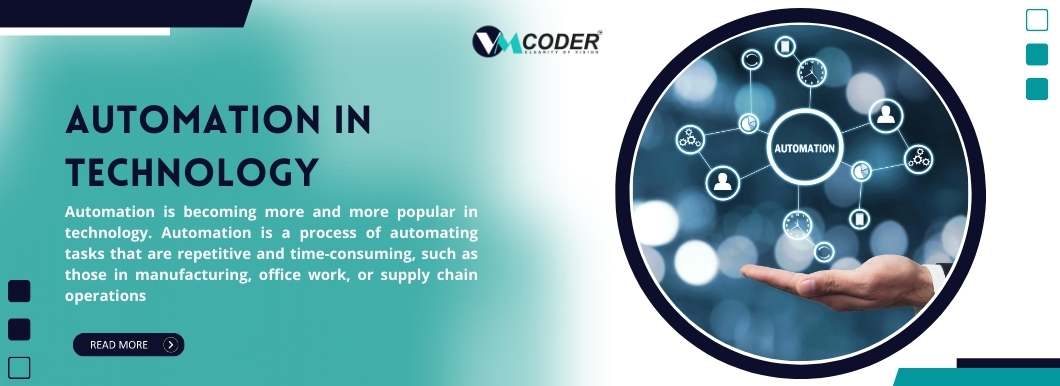Automation in Technology
Automation is becoming more and more popular in technology. Automation is a process of automating tasks that are repetitive and time-consuming, such as those in manufacturing, office work, or supply chain operations.
Automation can be used to increase the productivity of an organization by allowing it to focus on its core competencies while delegating more mundane tasks to computers. It also reduces stress on employees, since they do not have to deal with tedious or repetitive tasks on a daily basis.
The automation of technology is one of the most exciting developments in recent years.
Automation has been around for a long time and is used to automate many different processes, but the development of artificial intelligence (AI) has made it possible to create machines that can do tasks better than humans. The use of automation in technology can be seen across all sectors, including healthcare, manufacturing and finance.
The automation of work has been around for years, but recently it has become more common than ever. For example, cell phones have automated many phone calls and text messages through the use of technology such as messaging apps, voice assistants and artificial intelligence (AI).
Automation helps us save time by doing things faster and more accurately than we could ever do on our own. This is especially true when it comes to repetitive tasks that require little thought or attention from the user. For example, there are many times when you need to type in an address manually because your GPS system isn't working properly or you don't want to waste time looking for directions on Google Maps if you know where you're going already.
What are the 4 types of Automation?
1. Fixed Automation
This type is used when the workpiece or operation cannot be easily moved around or when it must be performed in the same position over and over again. Examples include machine tools that require precision alignment of critical parts, such as drill presses, lathes and milling machines. Fixed Automation requires special fixtures to hold the workpiece at an exact distance from the machine tool.
2. Programmable Automation
Programmable automation is a group of technologies that allows users to program a device to perform various tasks automatically. These devices can be used for business purposes, such as processing paper documents or assembling products, as well as consumer appliances such as dishwashers and ovens.
Programmable automation uses computer software to control the rate and timing of operations within an automated system. This allows the user to select and customize programs without the need for special programming equipment.
3. Flexible Automation
Flexible automation is the ability to change automation settings on the fly, so you can adjust your process as needed. This can be done by changing the automation cycle time or by adjusting the amount of material that gets sent through the system.
This type of automation allows you to make adjustments based on what is happening during your production run. For example, if there are problems with a certain part of your process, you can adjust how much of that part gets sent through the system. Flexible automation is often used in conjunction with other types of automation so that you can keep up with the demand for certain parts of your process.
4. Integrated Automation
A system that combines multiple types of automation in a single system to improve productivity and simplify operation. It is the most comprehensive form of automation because it involves the integration of multiple components into one system that performs the same function as a human being. Examples include factory floor robots, retail checkout systems and automated banking machines.
For example, if an operator has to perform three tasks in sequence, he or she will have to switch between these tasks every time they need to perform another task. This can lead to errors in the process because each task requires different skills and experience levels from the operator who performs it. On the other hand, with integrated automation, there is no need for switching between different tasks since all the processes are performed using one operator.
Benefits of Automation
1. Increases Efficiency
Automation is increasing efficiency in many ways. It helps to reduce the amount of time spent on repetitive tasks, which frees up your work to be done in more strategic ways.
Automation also makes it easier for workers to do more complex tasks by offering them the ability to focus on the more complex parts of their jobs while delegating less complex tasks to other employees. Automation is not just about replacing human labor with machines; it's about improving the way work is done by using technology to automate tasks that were once done manually.
2. Reduces Cost
Automation is a cost saving measure that can greatly reduce the cost of production. It is important to note that automation can be implemented at any stage in the manufacturing process, but it is especially useful during the design and production stages. If a company has multiple facilities, it can be beneficial to automate one facility and then use a manual or semi-automatic process on another facility. This allows for flexibility in production and ensures that there are no delays in getting products out the door.
Since there is no need for human involvement, the costs associated with hiring employees can be reduced. This means that more money can be saved and invested elsewhere in the business.
3. Improved Quality
Automation provides the means for machines to complete tasks more efficiently than humans. For example, automated equipment can be used for precision manufacturing, which reduces defects and increases quality. In addition, computerized machines can be used to test products before they reach customers in order to detect any problems before they are shipped out. This can lead to less downtime for your company and less expense on repairs as well as lost revenue due to damaged products.
Most of the time, automation is used to improve quality. If a machine can do something that humans can’t, then it’s just as good as having a human do it. That’s why we have robots in factories and computers doing accounting, data entry and customer service jobs for businesses.
4. Reduced Stress
Automation can be a very helpful tool when it comes to improving efficiency and helping businesses to get more done. One benefit is that automation can reduce stress.
When you work with an automated system, your job becomes easier and less stressful. You know what to expect, and the system takes care of everything else. You don't have to worry about setting up or maintaining any equipment or software. You don't have to worry about finding the right people to hire or train them up on how to use the system properly.
The best part is that automation lowers costs by reducing time spent on repetitive tasks and errors. This means that you don't need as many employees, which reduces overhead costs for your business.
Concluding Final Thoughts
Automation is a process that can be used to simplify the work of workers, saving them time and making their job more efficient. Automation allows for better quality control, which allows for higher productivity and lower costs.
Automation also allows for easy access to data that was previously unavailable or hard to access. This can be done through computerized records or other forms of storing information in an organized way.
Automation provides many benefits in the workplace and helps to increase productivity, accuracy, efficiency and profitability.
Written by :
Shweta Bhatia
Leave a Reply
Your email address will not be published. Required fields are marked *






